When we want to know more about 301 stainless steel foil, something must be mentioned. In iron-based alloys with at least 10.5 percent chromium are in stainless steel. By creating an undetectable and attached chromium-rich oxide coating, they obtain their stunning properties.
Moreover, 301 stainless steel is an austinct steel with a cubic facial structure centered. In the annealed stage it is largely non-magnetic and may only be toughened with cold work. Increasing corrosion resistance in environments of chloride was added to enhance molybdenum. The decreased carbon percentage of this alloy offers an even stronger resistance to corrosion in welded constructions.
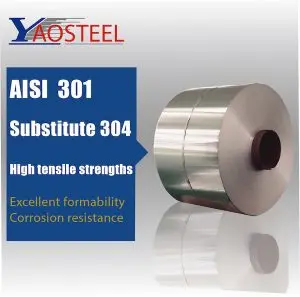
In addition to 301 ss foil, yaoyi can also provide you with 304, 316, 316L stainless steel foil. Thickness 0.01mm~0.05mm..
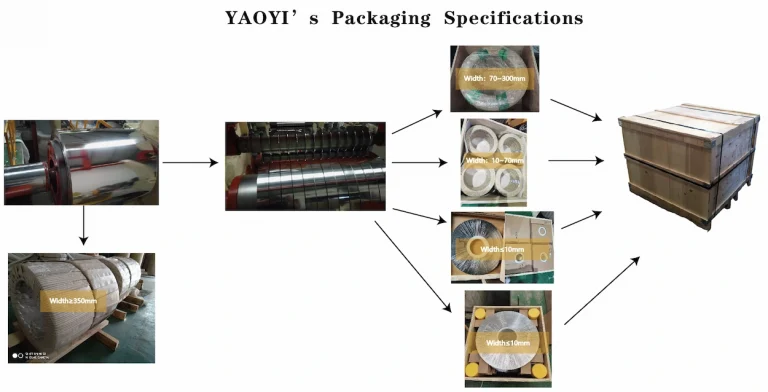
Since 301 Stainless Steel Foils in stainless steel have high temperature and minimal maintenance corrosion resistance, they are nonmagnetic, well soldered and formable. Use in thermotherapy, water barriers, chemical tanks, heat exchangers, heat exchangers, fine stocks, chemicals, metal pins and shim. Recyclable 100 percent. Titanium-added rollers give greater resistance to corrosion and welding.
The 301 Stainless Steel Foil provides a high temperature oxidation resistance. These Foils can endure high temperatures and also have exceptional welding properties. These 301 Stainless Steel Foil are prepared and processed under the rinses. These have good qualities that are used in a wide range of applications. The foliage has low cost of upkeep and performance.
Here are Some of the 301 ss Foil Features:
(1) Stable delivery by integrated manufacturing control of high-quality items.
(2) Excellent thickness and shaping precision, minimal surface flaws; very precise, ultrathine stainless steel foil of at least 10 mm (thickness) and width up to 460 mm can be delivered. (Dictionary thickness: 0.155mm).
You can always buy the most suitable products from Yaoyi. Of course, if you want some free samples, just contact us. Choosing us will be the wisest decision you have ever made.
The TFT substrate and the prototype displays in 301 Stainless Steel Foil is studied as superior in heat resistance and corrosion resistance. ss 301 Foil is not conductive, so it is not required to develop an isolating film on your surface when utilizing it as a display substrate instead of a glass substrate. There are efforts to employ a stainless steel insulated foil as a substrate for TFT production.
Therefore the resolution of electronic paper display components etc. is regulated by the accuracy of TFT production, thus there is generally an enormous requirement for surface smoothness of the glass substrates for display use.
On the other hand, the insulating film normally has a thickness of about 2 μm, such that the smoothness of the stainless steel foil surface itself also affects the surface smoothness. Then, following rolling, bright annealing is done to give the surface a mirror polish as a technique for flattening the surface of stainless steel foil.
A bright and rectified product is referred to as a “BA” and superior to a hard (H) material that is not rectified brightly.
On a related note, for the H and BA treated surfaces of steel foil the Ra measured with a stylus-type surface roughness meter was 61 nm and 15 nm, while the Ra surfaces of the isolation films had rarenesses of 28 nm and 11 nm. The flatness of the BA material is higher than the H. It is also better, the smoothness of the insulating film that is created on it.
However, a brightly recalled BA material’s stainless steel foil has the problem of a poor recovery in shape, even depending on the density. When a film of approximately 150 μm thickness rolls into a tube of approximately50 mm diameter that can be handled by one hand, even when the rolling force is released, the foil will not return to a level surface. An uneven surface occurs when it tries to regain its shape aggressively.
A BA material is thought to be poorly restored due to strain removal and smoothing throughout the cleansing process. Whether the original form is reverted to after rolling is critical for a flexible display substratum. Until you are roll-up, it is difficult to use as a display unless you can spread flat and look up.
In addition, a TFT rear substratum is therefore necessary for flexible display use after rolling-up but up to now no approach has been detected for both surface smoothness and shape recovery.
ASTM A167: Composition, Properties, and Equivalent Grades
When it comes to the production of stainless steel foils from mother coils to final products, complete solutions may be found here. In several industry sectors we deliver precision rolls of rinsed stainless steel films.
We make incredibly high quality, super thin, 301 ss Foil which are exceptionally flat and are produced to tight tolerances to ensure precision for end customers. Each order is tailored to the exact needs of each customer.
Notably, 301 Stainless Steel Foil has qualities that are unparalleled by other, thin films in many areas. The strong strength to weight ratio and corrosion resistance and oxidation are often desirable at high temperatures.
Constantly, the intricate and costly casting and ringing equipment involved are responsible for a substantial part of the high cost of making stainless steel foil via rolling. A procedure that makes (solid) chromized (coated) steel stainless steel, which is less expensive than traditional stainless steel processing like Type 430, will be detailed. Moreover, the material is more ductile and less work-hard during film processing, therefore removing intermediate treatments of annealing and minimizing scrap losses.
There are several surface treatments and grades for this material to withstand diverse situations. Chromium is used to prevent roasting and to survive in tough surroundings where steel is generally impossible. Chromium forms an unseen but protective layer that enables the sheet of stainless steel to remain radiant and protected in steel sheets.
Thus, 301 Steel Foils are provided with a range. In gages / size from.0005′′ to.010′′ our stainless steel is available and in temperatures ranging from the coated to hard to stainless steel rolling sheets and sheets. We have the ability to deliver materials with internal diameters on fiber, steel, aluminum and plastic cores.
The high-quality sheeting services in steel and other metals are necessary for stainless steel. For stainless steel, Aluminum and copper, we offer sheeting services. This foil sheeting solution is popular for industrial and automotive applications. Depending upon which gage you choose and the size of the steel sheets, we also provide shear and rotational sheeting techniques.
Due to the simplicity of the technique, low costs, high production capability and accuracy, micro punching has become a promising micro production process. But due to the challenges of tool making, the size of a pounded micro-hole is limited. In the paper we suggest a buckling design approach and a form of micro-die manufacturing technology for micro-punching.
High dimensional precision micropunch and female die were made using micro-EDM with electrode blocking. In the precision micro punching tool, micro punching procedures were carried out of stainless steel foil with a micropunch and a female die. A nice profile and high dimensional precision pierced micro-holes diameter will show that the micro-produced is suitable for micro-punching processes.
The production team of experienced professionals and qualified staff designing and developing 301 Stainless Steel Foil in accordance with national and international quality requirements. Our Stainless Steel Foils are produced according to our clients’ different needs. We produce 301 stainless steel strip coil Foils that use raw materials of the optimal quality.
ASTM A167: Composition, Properties, and Equivalent Grades
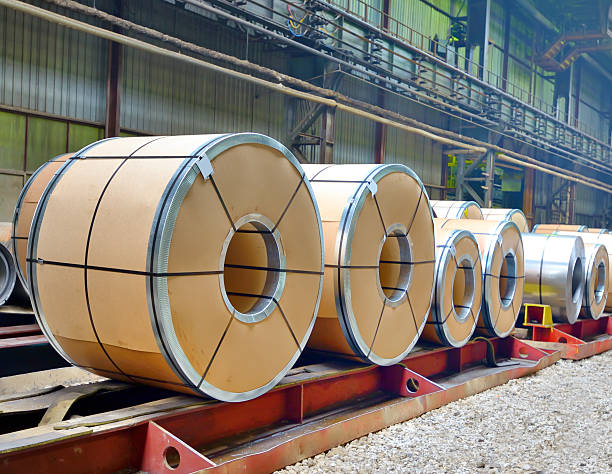
301 Stainless Steel Foils have been employed in turbine applications for the aerospace and automobile industries. For retrievers or heat exchangers, the foil approximately 2 mils (5.1 μm to 10-3 cm) thick, which was also utilized in honeycomb and in truss-core structure, has proved appropriate. Moreover, this film was used as a wrap to shield the steel components against heat treatment contamination.
Application Springs for electronics and precise equipment, board strengthening, honeycomb bodies (carriers of catalysts for emission treatment), etc:
Striking engines, exhaust manifolds, furnace components, valve and pumper trims are typical applications and are used for type 301 Stainless Steel Foil. This is also the variant of the extra-low carbon, which reduces hazardous precipitation of carbine by welding.
We as manufacturer and supplier 301 stainless steel strip coil Foil of every sort and meet all requirements in engineering and other industries. Our skilled engineers are happy to be able, at leading affordable costs, to provide our valued customers a large choice of corrosion proven innovative Stainless Steel Foils. We make sure that we obtain very reputable materials from some of the leading sellers on the market. We also customize our customers in order to guarantee optimal customer pleasure. These are available in several sizes and specifications and also for bulk orders.
We produce a highly functional, ultra-thin stainless-stain steel foil, which is good in etching properties and press formability, and finally has high span precision, strength and spring capabilities.
In addition to the highest thickness features, the extremely exact rolling of stainless steel produces stainless steel film that is as thin as 100 mm, so its flexibility, its lightness and its corrosion resistance are good. Edgy steel foil has higher resistance to corrosion, strength, and electrical resistance compared to aluminum foil and copper foil.
Our 301 Stainless Steel Foil is manufactured with advanced tools and workable devices. The surface finish, durability and outstanding strength are accurate. Every step is thoroughly inspected and monitored by professionals by the quality control teams.
In order to verify the quality of our 304L Stainless Steel Foil before the packaging we test our product in several quality parameters. We precisely pack in order to avoid damage during shipping using the appropriate packaging material Stainless Steel 304L Foils. We also offer custom packaging and delivery alternatives according to customer specifications.
How To Find The Right Stainless Steel Supplier
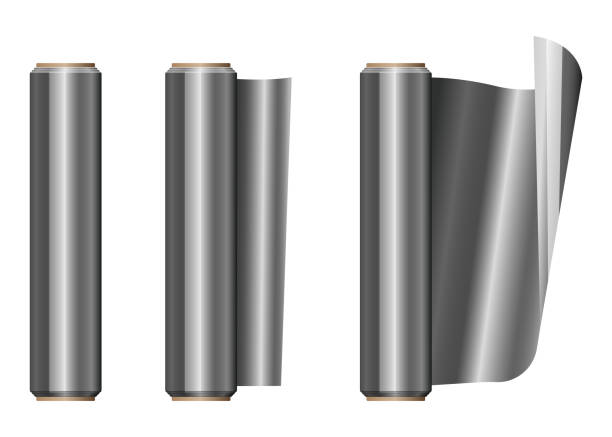
301 Stainless Steel Foil is popular as when it comes into touch with water it is not easily stained, corroded or rusted. This distinguishes it from typical steel while keeping the material’s strength. It is a common choice for both industrial and commercial purposes, making stainless steel sheets or stainless steel rolls.
Stainless Steel 316 And 316L Graded By The AISI System
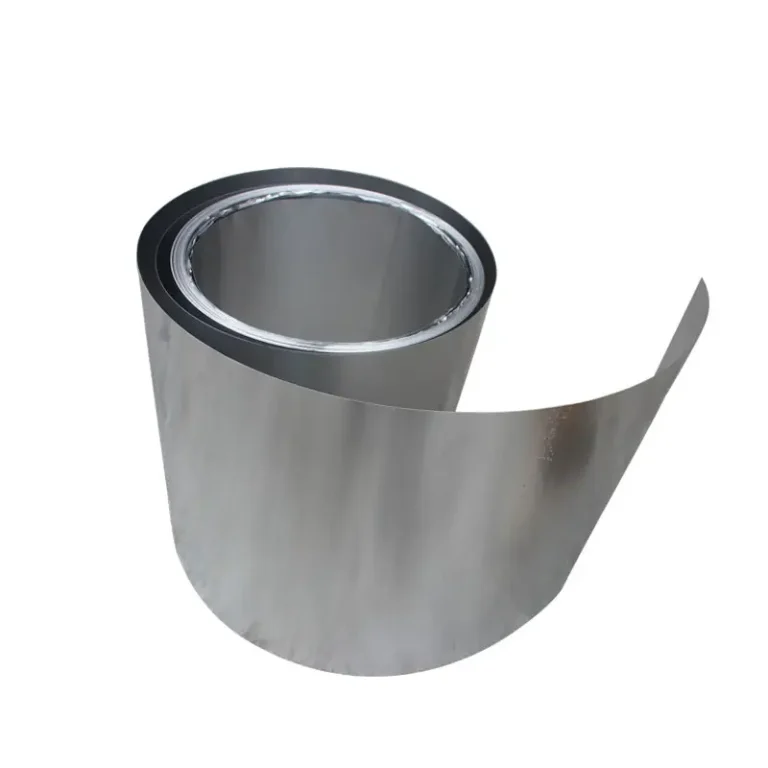
301 stainless steel foil is a type of stainless steel that contains high levels of chromium and nickel. It is a non-magnetic alloy that has excellent corrosion resistance, high strength, and good ductility. The material is typically produced in thin, flat sheets that are referred to as foils. These foils can vary in thickness and width to meet specific requirements for various applications.
301 stainless steel foil is known for its ability to withstand harsh environments, including exposure to high temperatures, chemicals, and moisture. Due to its excellent corrosion resistance, it is commonly used in the automotive, aerospace, and medical industries. The material can be easily formed, welded, and machined to create a variety of products and components.
Like other types of stainless steel, 301 stainless steel strip coil foil is available in a variety of finishes, including polished, brushed, and matte. The material is also available in a range of thicknesses and widths to meet specific requirements.
301 stainless steel foil is available in various thicknesses, depending on the specific application it will be used for. Generally, the thicknesses of 301 stainless steel foil range from 0.01mm to 1.0mm.
For very thin applications, 0.01mm to 0.05mm thicknesses are commonly used. These thicknesses are ideal for applications that require a high degree of flexibility, such as electronics or medical devices. For slightly thicker applications, 0.1mm to 0.5mm thicknesses are more commonly used. These thicknesses are often used in automotive and aerospace industries. For even thicker applications, 0.5mm to 1.0mm thicknesses are used. These thicknesses are often used in heavy machinery and equipment.
It is important to note that the availability of certain thicknesses may vary depending on the manufacturer. It is recommended to consult with the manufacturer to ensure that the desired thickness is available.
301 stainless steel foil is widely used in various industries due to its excellent corrosion resistance, high strength, and good ductility. Some common applications for 301 stainless steel foil include:
Automotive industry: 301 stainless steel foil is commonly used for manufacturing components such as springs, clamps, and brackets in the automotive industry due to its high strength and corrosion resistance.
Electronics industry: 301 stainless steel foil is used for making components such as battery contacts, precision shims, and heat sinks in the electronics industry.
Medical industry: 301 steel foil is used for manufacturing medical instruments and implants due to its high strength, corrosion resistance, and biocompatibility.
Aerospace industry: 301 steel foil is used for manufacturing aircraft components such as fuel tanks, wing structures, and engine components due to its high strength and corrosion resistance.
Chemical industry: stainless steel 301 foil is used for manufacturing chemical processing equipment such as tanks, pipelines, and valves due to its excellent corrosion resistance.
Food industry: stainless steel foil 301 is used for manufacturing food processing equipment such as conveyor belts, storage tanks, and processing machinery due to its excellent corrosion resistance and hygiene properties.
Compared to other stainless steel foils, 301 stainless steel foil has a higher tensile strength and higher corrosion resistance. It also has good ductility and can be easily formed into various shapes and sizes. Additionally, 301 stainless steel foil has a high work-hardening rate, which means that it becomes stronger and harder as it is cold worked.
Compared to 304 stainless steel foil, which is commonly used in many applications, 301 stainless steel strip coil has a higher tensile strength and can withstand higher temperatures. It is also more corrosion-resistant than 304 stainless steel foil in some environments. However, it has lower ductility than aisi 304 steel foil, which may make it less suitable for some forming applications.
Compared to 316 stainless steel foil, which has higher corrosion resistance than both 301 and 304 stainless steel foils, 301 stainless steel foil has higher tensile strength and can be more easily formed. 316 stainless steel foil is commonly used in applications where high corrosion resistance is required, such as in marine environments or in the chemical processing industry. However, it may be more expensive than 301 stainless steel foil.
Yes, 301 stainless steel foil is magnetic. This is because it is made with a high percentage of iron, which is a magnetic material. The magnetism of the foil can be useful in certain applications, such as magnetic shielding or in the production of electrical transformers. However, it is important to note that the level of magnetism can vary depending on the specific composition and processing of the 301 stainless steel strip coil foil.
Yes, 301 stainless steel strip coil can be customized to fit specific needs. Manufacturers can provide custom thicknesses, widths, and lengths based on the requirements of the application. They can also offer various surface finishes, such as matte, polished, or brushed, depending on the desired appearance and functionality.
Additionally, manufacturers can provide special treatments to enhance the properties of the 301 stainless steel strip coil foil. For example, they can offer annealing or tempering services to improve the ductility and formability of the foil, making it easier to shape or bend without cracking or breaking. They can also provide coatings or platings to increase the resistance to corrosion, wear, or abrasion.
It is important to communicate the specific requirements and intended use of the 301 stainless steel foil to the manufacturer to ensure that they can deliver the most suitable product for the application.
Both 301 stainless steel foil and stainless steel strip coil are made of stainless steel and are used in a variety of applications. However, there are some key differences between the two.
301 stainless steel foil is a type of austenitic stainless steel, which contains chromium and nickel. It is known for its high strength and excellent corrosion resistance.
Stainless steel strip coil, on the other hand, is a general term used to describe a variety of stainless steel alloys that are formed into long, narrow strips. The composition can vary depending on the specific type of stainless steel used.
301 stainless steel foil is typically sold in thin sheets or coils, and is used for a variety of applications including electronic components, springs, and automotive parts.
Stainless steel strip coil, on the other hand, is sold in long, continuous strips that can be cut to size as needed. It is commonly used in manufacturing processes such as stamping, bending, and forming.
Overall, while both 301 stainless steel strip coil foil and stainless steel strip coil are made of stainless steel, they differ in composition, form, and thickness. The choice between the two depends on the specific needs of the application.
Moreover, its cost-effectiveness and proven performance make it an attractive choice for projects requiring both strength and corrosion resistance.